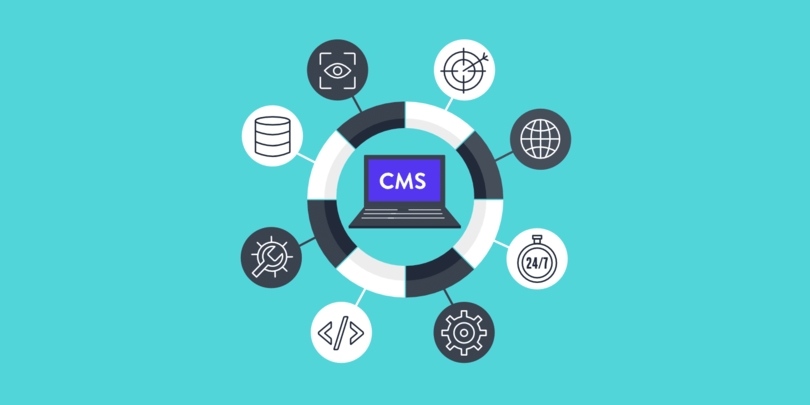Research shows that 79% of entrepreneurs who have a website expect to grow by at least 25% in the next few years. In other words, nearly 20% of business owners fail to prioritize their website as a part of their strategy. We don’t forget to check out our favorite brands’ websites every time we want to buy something. Be it trendy sunglasses or a pair of comfy slippers. How can the same not be true for your audience? They need to see you online and be wowed by your website before making a purchase. A website helps bring in that trust factor. It is the first point of contact for customers with businesses. They use it to judge a business’s credibility and compare it to others on the web. Needless to say, a solid online presence is important. A website drives traffic, brings in qualified leads, and improves business conversions. Therefore, it is crucial to develop one that is not only impressive but also accessible and offers a great experience. How do you do that? By researching your target audience and improving the overall user experience. Myntra’s website homepage is an excellent example of blending web design with accessibility. Notice how its visual content is in sync with fonts and themes, thus improving its overall appeal. Designing the structure of your website to allow people to get what they want is only one step towards ensuring that they leave it impressed. There are many more. In this article, we take you through each one to help your website stand out in the online market.
1. Improve User Experience
User experience (UX) is central to any business site. It improves conversion rates and increases ROI. It is made up of elements like user interface, web hosting, and
Pay attention to the user interface (UI)
We cannot stress the value of an engaging user interface (UI) enough. It marks the point of interaction between humans and technology. You can think of it as all the elements of a website that keep your audience engaged. If people don’t like your site’s UI, you will have a tough time convincing them about the quality of your products. Therefore not only having great UI is vital, but also you may implement monolithic architectures approach to easily develop your software.Don’t believe us?
Check out this recent article on our blog that points out how web design and user experience can impact your online sales. It is necessary to research the market before you start designing your site. Create a unique UI by using elegant graphics and fonts that reflect your brand values. They should be optimized for fast loading (more on this later) to ensure that people stay long enough on your page to check out your services. Further, include call-to-action buttons like "Buy Now" and "Save for Later." These can be customized depending on what you sell. This will guide the audience through the next steps.
Invest in a good website hosting company
Creating a prominent online presence takes a lot of effort. Without reliable web hosting, your website user experience will suck. A hosting company sets aside space on its server to store your website’s files and makes them available for online viewing. Find a host that can be relied upon to manage your website’s operations effectively. There are plenty of host service providers in the market. Go for a web hosting that offers great value for money. Consider it an investment that can determine your website’s success. Shared hosting, dedicated, and virtual private servers (VPS) are the three main types of hosting services available today. What sets them apart is their performance and the technical support offered by the company. Work out a budget and go for a service that aligns with your business needs.Run your website on an optimal content management system (CMS)
You may have probably heard a lot about content management systems. The way they have changed the mode of doing business is remarkable. No wonder, the CMS market is expected to touch $143 billion by next year. Installing a content management system does not require much technical knowledge. Consider the benefits and drawbacks of each CMS shared below. • WordPress: There’s much fanfare around WordPress because of its plugins. There are plenty of them around that can extend the functionality of your site. What’s more? Since WordPress enjoys a huge community of passionate developers, it doesn’t take a lot of time to find someone who can make a plugin (in case it doesn’t already exist). WordPress is easy and free to install. However, given its popularity, you need to ensure that you develop your site for performance. A website’s loading speed is a mark of its performance and UX. It is so important to find WordPress developers that can tackle various web design challenges. After all, who doesn’t want to visit and re-visit a super-fast website? According to an important study, customers abandon their purchases if a website is slow. However, what gets overlooked is how site speed causes websites to go down in search rankings (SERPs). A slow website negatively affects UX and increases bounce rate. A high bounce rate tells search engines that people didn’t find a particular website relevant or useful. The search engines punish it by moving it down in the SERPs. Thus, site loading is a crucial factor in SEO. If you don’t optimize your business website for speed, it will heavily impact your online reputation and sales. Check out this guide for tips on how to optimize your site. Involve your internal SEO team or hire a professional to get the best WordPress website optimization services. • Drupal: Drupal offers flexibility, ease of use, and boasts of a vast support community. It is also known for being a safer CMS than WordPress. The White House ran its website (whitehouse.gov) on Drupal until recently. However, Drupal doesn’t come with many plugins or theme options. As a result, it is not very extensible. Moreover, it doesn’t enjoy much community support as compared to WordPress.
• Joomla!: It is an open-source CMS that provides better security, SEO, and fantastic multilingual capabilities. However, it offers only 6,000 extensions or plugins and no free good themes. Joomla! is a mixture of WordPress and Drupal but doesn’t cater to any one niche. The fact that it accounts for only 2.1% of usage on the web shows that it has failed to make a mark for itself in the CMS market. Content management systems play a pivotal role in managing a website. They make it possible for small businesses to compete with established players while ensuring a great user experience. Ensure that you invest in a CMS that offers your business website the plugins it needs for a smooth operation.
2. Invest in Content Marketing
Whether you like their products or not, it's hard to argue that Nike branding strategy is a powerful and successful one. Nike’s homepage banner can tell you a lot about the great content they offer. It comprises vibrant images that have a visual appeal. Nike uses them to weave a story around its brand values. They do it because they know that nothing appeals to audiences like stories. While Nike is an established brand, you can also employ this content marketing tactic to stand out from your competitors online. Use engaging visual content on the top of your website homepage. Pair it with a short introductory text to tell people about what you sell. Do it in a manner that reflects your unique story. Additionally, invest time and effort in creating an awesome "About Us" section for your firm. This section tells people who you are, what’s your mission, and where to find you. Also, add a blog to your site to publish quality content about relevant industry topics. A blog can encourage people to visit your site repeatedly, thereby improving its ranking. Nowadays, blogging is a crucial element when developing a search-optimized website. Indeed, search engines like Google take content as a vital factor for SEO. Testimonials are another great piece of content to win over your audience. They help build trust and an emotional connection with people. Sharing different forms of relevant and quality content will help establish your brand in your niche.

3. Track Performance
The phrase "content is king" is commonly thrown around by digital marketers across the globe. However, content that’s not measured cannot rule. In other words, to ensure success, it’s critical to measure the performance of your content. Hence, analyzing traffic to your website is vital. This will help you rework your content strategy and make it more relevant to your audience. Both Google Analytics and Google Search Console are great tools to measure user engagement. They help in tracking metrics like visitors to your site, the average time they spend, and the bounce rate. They also offer access to information like the number of views on each page. All this data can be used to create engaging web pages that convert. Analytical tools give you the data-based insights you need to scale your business. Count on them to take your business website to new heights.
4. Maintain Your Website
Creating a successful business website is not a one-time task. It is an ongoing process that requires work on multiple fronts. Website maintenance is one of them. You cannot expect your site to continually rank well if you do not consistently share relevant content with your audience. Hence, you must stay alert to the best practices and latest trends in the digital market and invest in boosting your site’s security. This will not just strengthen your online presence but also keep your website and visitors safe from malware. Small business websites are relatively easy targets for hackers because they often lack the required infrastructure. A report by Fundera points out that small businesses are a target of 43% of cyber attacks. Hence, you must regularly update the software and run scans for any security concerns. Making daily backups is another method of ensuring the safety of your website data.





